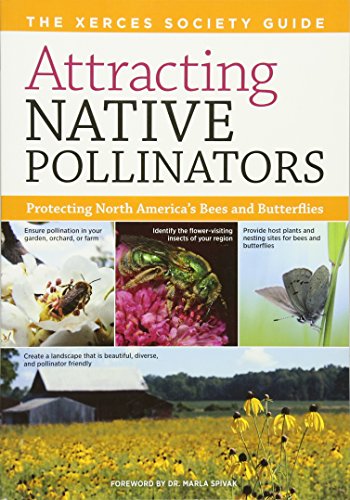Finding the best colony collapse disorder suitable for your needs isnt easy. With hundreds of choices can distract you. Knowing whats bad and whats good can be something of a minefield. In this article, weve done the hard work for you.
Reviews
1. Attracting Native Pollinators: The Xerces Society Guide, Protecting North America's Bees and Butterflies
Feature
Attracting Native Pollinators The Xerces Society Guide Protecting North America s Bees and ButterfliesDescription
2. Colony Collapse Disorder
Feature
Used Book in Good ConditionDescription
Expansive and innovative, this is the fifth collection from award-winning poet Keith Flynn. A place-based abecedarium, this compilation features two poems representing each letter of the alphabet. Recalling a specific place, city, country, or region, these poems vary in form and texture and are linked to the adjacent poems by a theme, an image, or a single word. The result is a collection filled with historical vignettes and an unerring grasp of contemporary culture. An almanac with inspiring insights into the human condition, this book utilizes a musical language and illustrates the planet's new global challenges.
3. Spring without Bees: How Colony Collapse Disorder Has Endangered Our Food Supply
Feature
Used Book in Good ConditionDescription
4. The Case of the Vanishing Honeybees: A Scientific Mystery
Feature
Used Book in Good ConditionDescription
Honeybees are a crucial part of our food chain. As they gather nectar from flowers to make sweet honey, these bees also play an important role in pollination, helping some plants produce fruit. But large numbers of honeybees are disappearing every year... and no one knows why. Is a fungus killing them? Could a poor diet be the cause? What about changes to bees' natural habitat? In this real-life science mystery, scientists and beekeepers are working to answer these questions... and save the world's honeybees before it's too late.5. 50 Ways to Save the Honey Bees (and Change the World)
Feature
50 Ways to Save the Honey Bees and Change the WorldDescription
Help save the bees and the world with these simple and considerate ways!For decades, bees and bee colonies have been disappearing around the world, worrying beekeepers, ecologists and farmers. But its easy help save and revitalize your local bees, as well as the local ecosystem, with these 50ways. Simple contributions can start with sharing a link on social media or buying local, organic foods, while more intense steps can include gardening, building habitats and beekeeping! If youve ever wondered what you can do to help, here is the best place to start!
6. Colony Collapse Disorder: The Vanishing Honeybee (Apis mellifera)
Feature
Colony Collapse DisorderDescription
With a third of human food coming directly and indirectly from honeybee pollination, colony collapse disorder (CCD) will have significant economic, ecological, and social impacts if further colony losses are not prevented. CCD is a complex problem that results from both natural and anthropogenic causes. This book will discuss the various factors that have been researched as possible causes for colony loss as well as explore the long-term effects that this decline could have. The analysis is helpful for anybody interested in protecting the species that provides access to a healthy livelihood for humans.7. Honey Bees and Colony Collapse Disorder: Select Analyses (Agriculture Issues and Policies)






